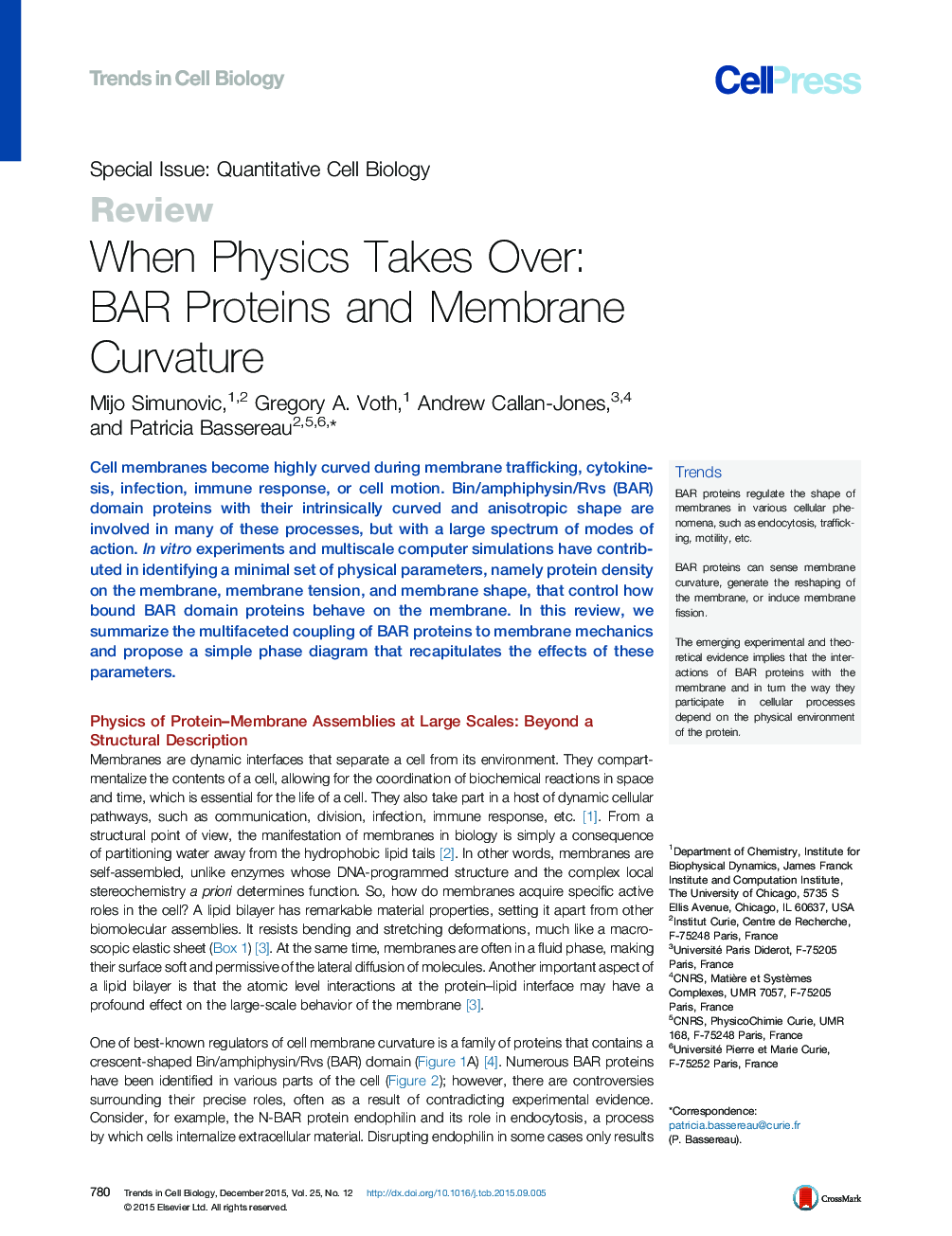| Article ID | Journal | Published Year | Pages | File Type |
|---|---|---|---|---|
| 2204260 | Trends in Cell Biology | 2015 | 13 Pages |
Cell membranes become highly curved during membrane trafficking, cytokinesis, infection, immune response, or cell motion. Bin/amphiphysin/Rvs (BAR) domain proteins with their intrinsically curved and anisotropic shape are involved in many of these processes, but with a large spectrum of modes of action. In vitro experiments and multiscale computer simulations have contributed in identifying a minimal set of physical parameters, namely protein density on the membrane, membrane tension, and membrane shape, that control how bound BAR domain proteins behave on the membrane. In this review, we summarize the multifaceted coupling of BAR proteins to membrane mechanics and propose a simple phase diagram that recapitulates the effects of these parameters.
TrendsBAR proteins regulate the shape of membranes in various cellular phenomena, such as endocytosis, trafficking, motility, etc.BAR proteins can sense membrane curvature, generate the reshaping of the membrane, or induce membrane fission.The emerging experimental and theoretical evidence implies that the interactions of BAR proteins with the membrane and in turn the way they participate in cellular processes depend on the physical environment of the protein.
